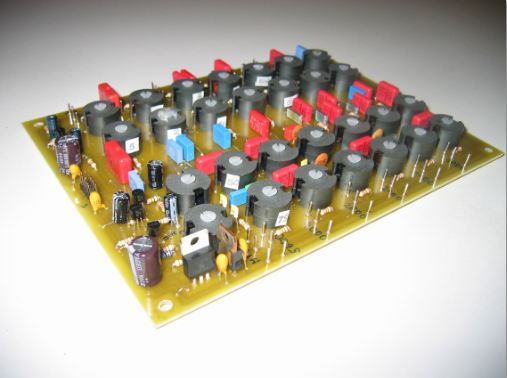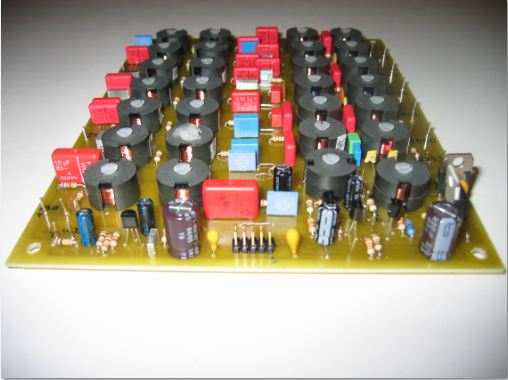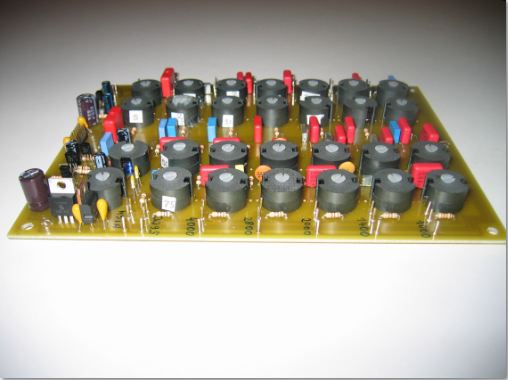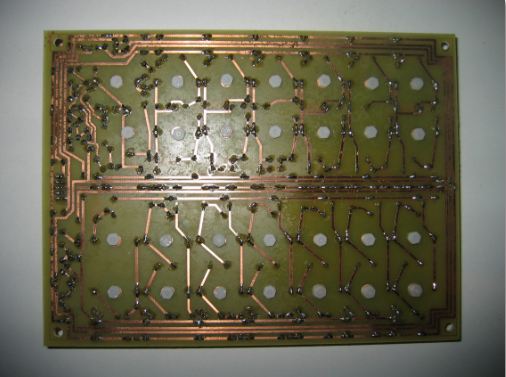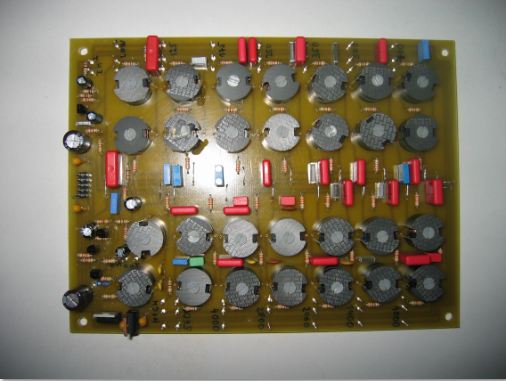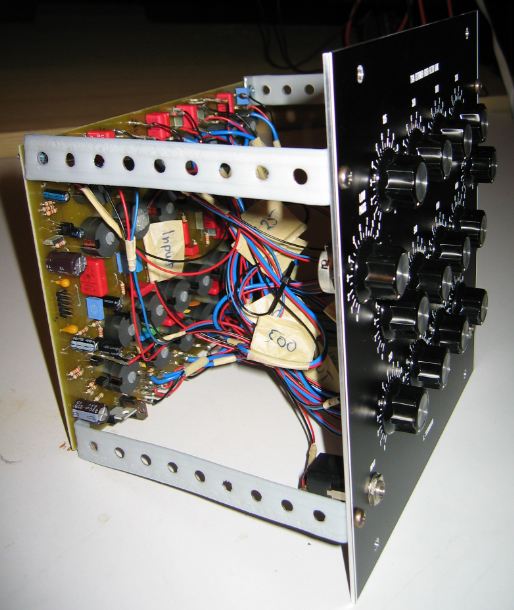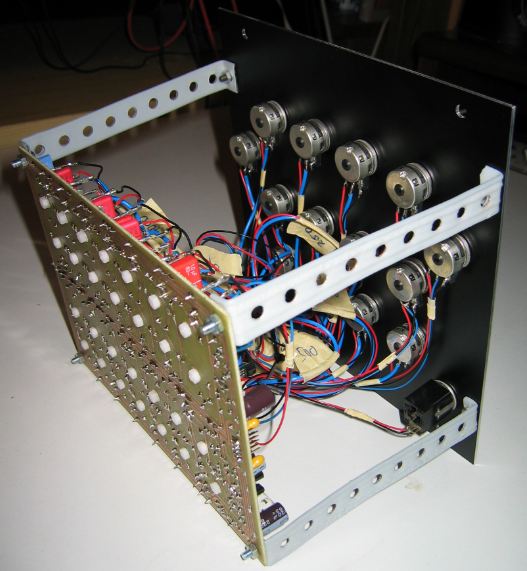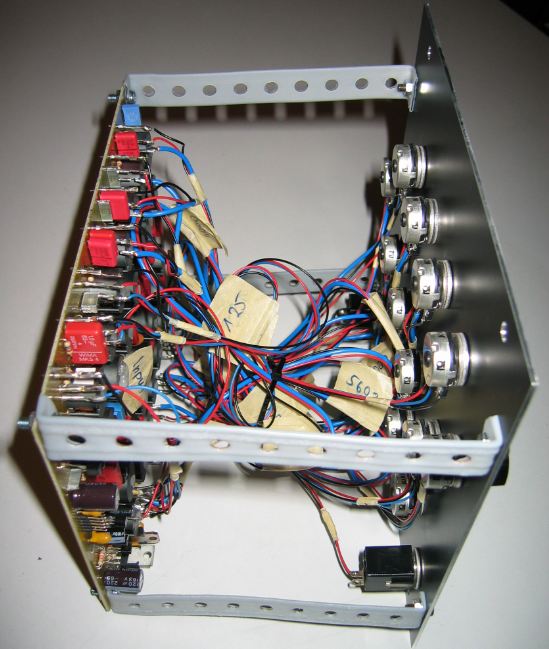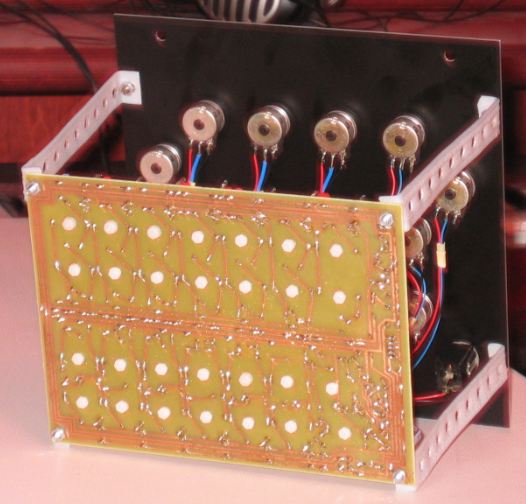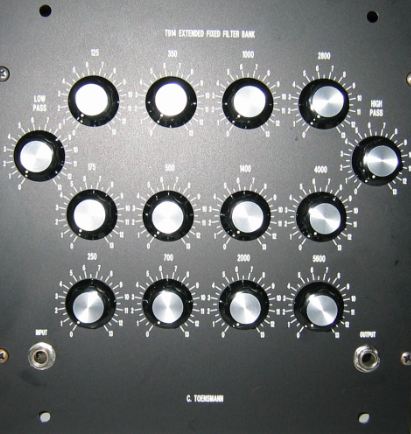
| The human interface of the 914 shows one of the most characteristic module frontends I've ever seen. For me this frontend is one of the identifying elements of Moog modular systems - you see just this one, and you know: this is a Moog modular system, before you even had a look at the other modules.
A lot of knobs - arranged in a kind of face look - are reponsible for one frequency band each (see list above). They are not only attenuating a frequency band but also emphasizing it.
Two connectors - one for input, one for output are the interface to the system. No backside connectors this time.
|

